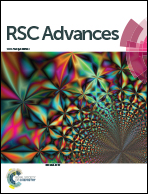Tribological and mechanical properties of pine needle fiber reinforced friction composites under dry sliding conditions
Abstract
Pine needle fibers were pretreated with alkali, and then mixed with other raw materials to fabricate pine needle fiber reinforced friction composites through compression moulding. The effects of pine needle fiber content on the tribological properties of the friction composites were tested using a friction material tester at constant speed. Experimental results showed that the friction coefficient of the pine needle fiber reinforced friction composites was very stable and markedly fade was not obvious compared with specimen FC0 (containing 0 wt% pine needle fibers); the wear rates of the friction composites generally increased with the increase of temperature and were significantly influenced by the test temperature. The wear rate of specimen FC7 (containing 7 wt% of pine needle fibres) was the lowest compared with that of other specimens at each temperature, except for that when the temperatures were about 200 °C. Morphologies of wear surfaces of pine needle fiber reinforced friction composites were observed using scanning electron microscopy (SEM) and the friction characteristics were analyzed. The results showed that the worn surface of specimen FC7 was smoother compared with that of specimen FC0.


 Please wait while we load your content...
Please wait while we load your content...